




Health Information



4 Common postural/ movement mistakes and how can we prevent them at house cleaning
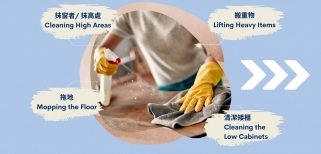
4 Common postural/ movement mistakes and how can we prevent them at house cleaning (by Sportsperformance Physiotherapy)
Many people to do house cleaning. However, have you ever thought that improper posture while cleaning leads to serious consequences? Injuries such as Tennis Elbow, Golfer Elbow, and Mommy's Thumb can easily arise. Excessive bending, prolonged squatting, excessive use of force, and overstretching during cleaning can potentially cause different strains on muscles, leading to various pain. Let's take a look at the proper posture and how to do the housecleaning without risking injury.
4 Common postural/ movement mistakes and how can we prevent them
1. Cleaning High Areas:
Incorrect: When cleaning windows or high areas, it's common to raise your head up for a long period of time, causing strain in the neck muscles. Additionally, standing on tiptoes and repeatedly stretching the arms upward can result in shoulder and neck injuries.
Correct: Use a ladder or use a tool with a long handle for cleaning, and try to avoid lifting your arms up higher than your shoulders for a long period of time. This will help reduce strain over your shoulders and neck.
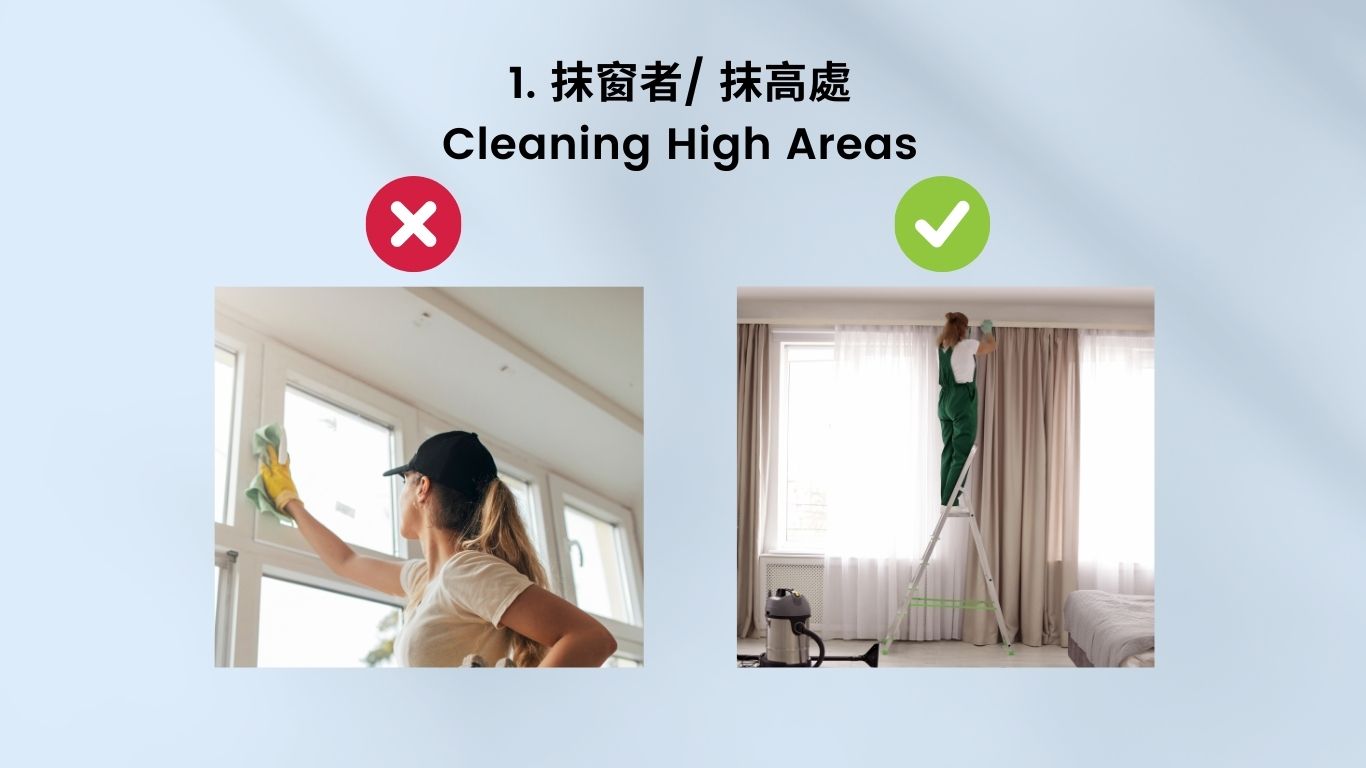
2. Lifting Heavy Items:
Incorrect: When lifting heavy items, if you have back bent or if you lift them with out-reached arms, it's easy to get injured.
Correct: Keep the body as close to the heavy items as possible, gradually squat down, use the muscles of the lower body to lift the items, and avoid twisting and forward bending with your back.
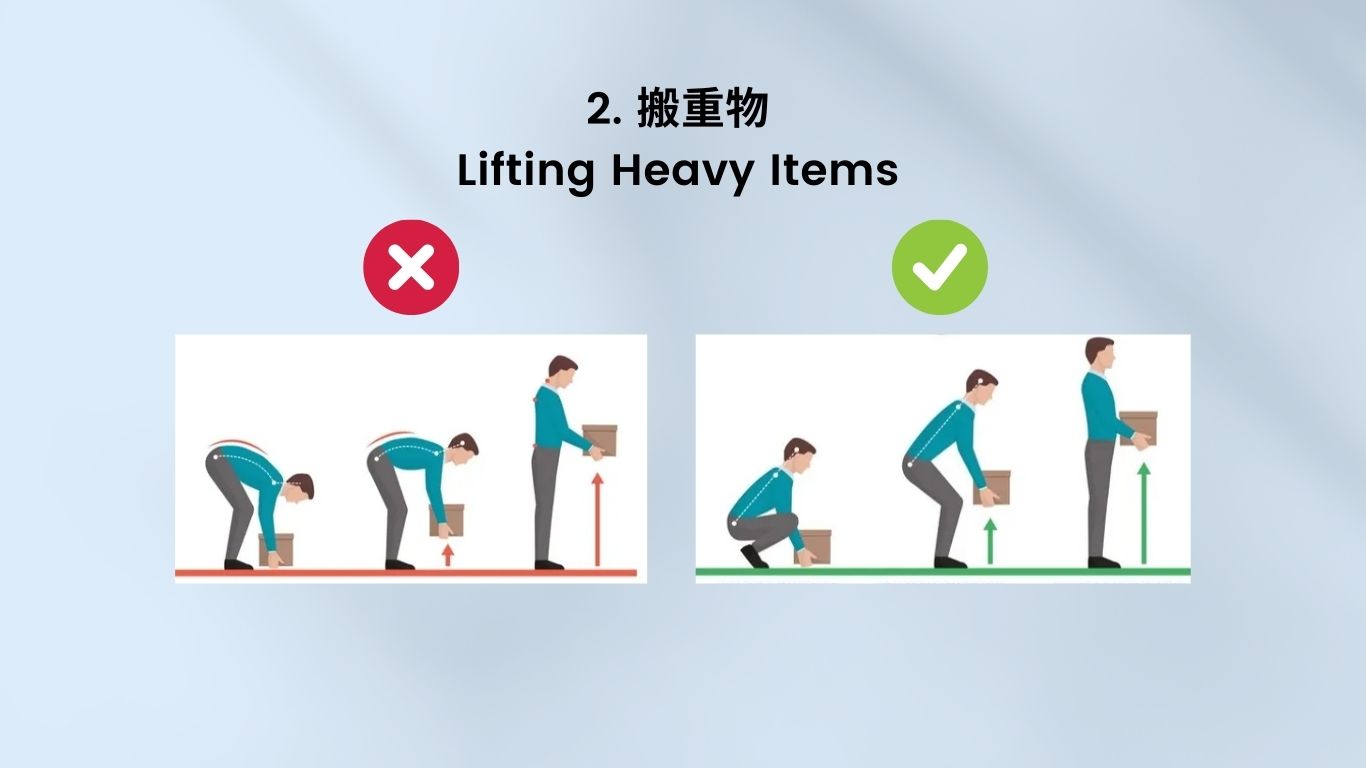
3. Mopping the Floor:
Incorrect: Leaning too far forward puts a constant strain on the back muscles, leading to strains or injuries.
Correct: Focus the exertion on the lower body, bend your hips and knees without bending your back.
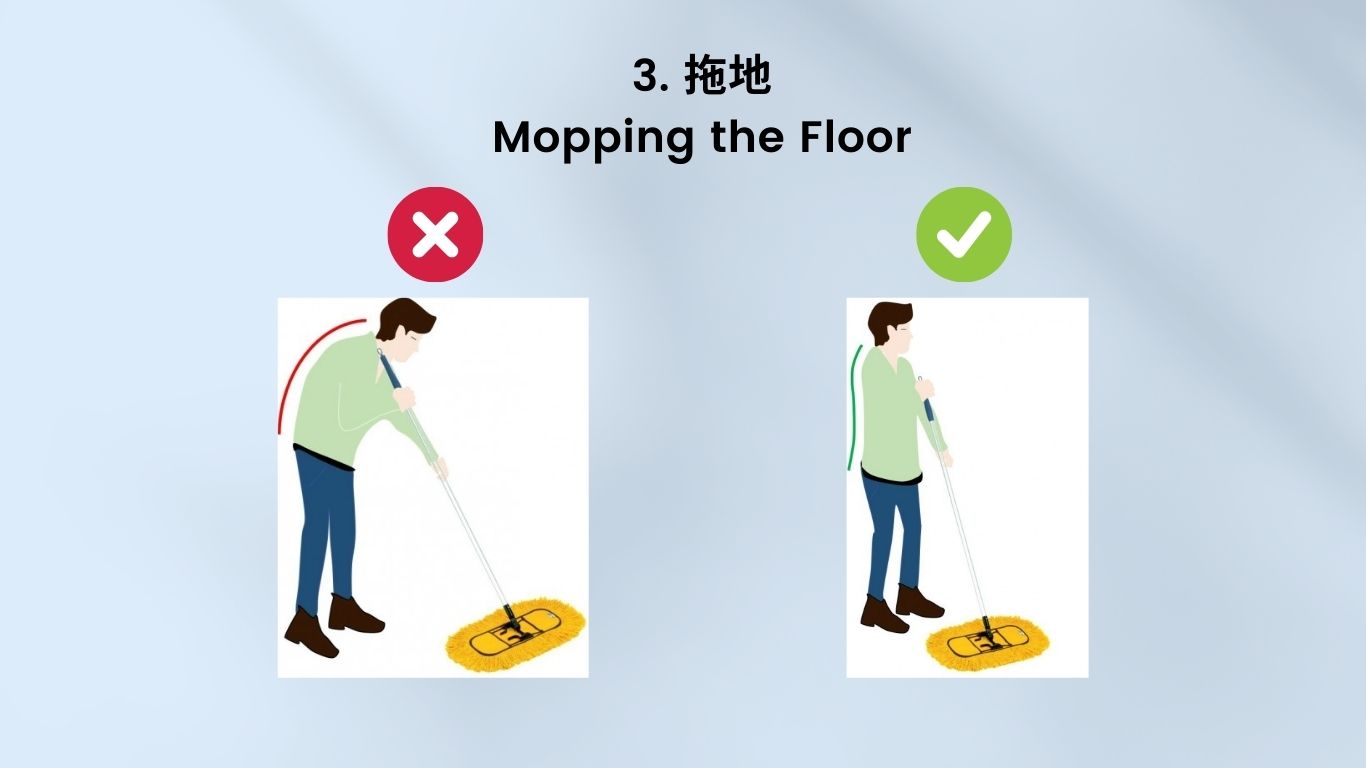
4. Cleaning the Low Cabinets:
Incorrect: Squatting for too long puts significant pressure on your knee caps.
Correct: Try to find a low stool, sit close to the low cabinet, and avoid prolonged squatting to allow the knees to relax.
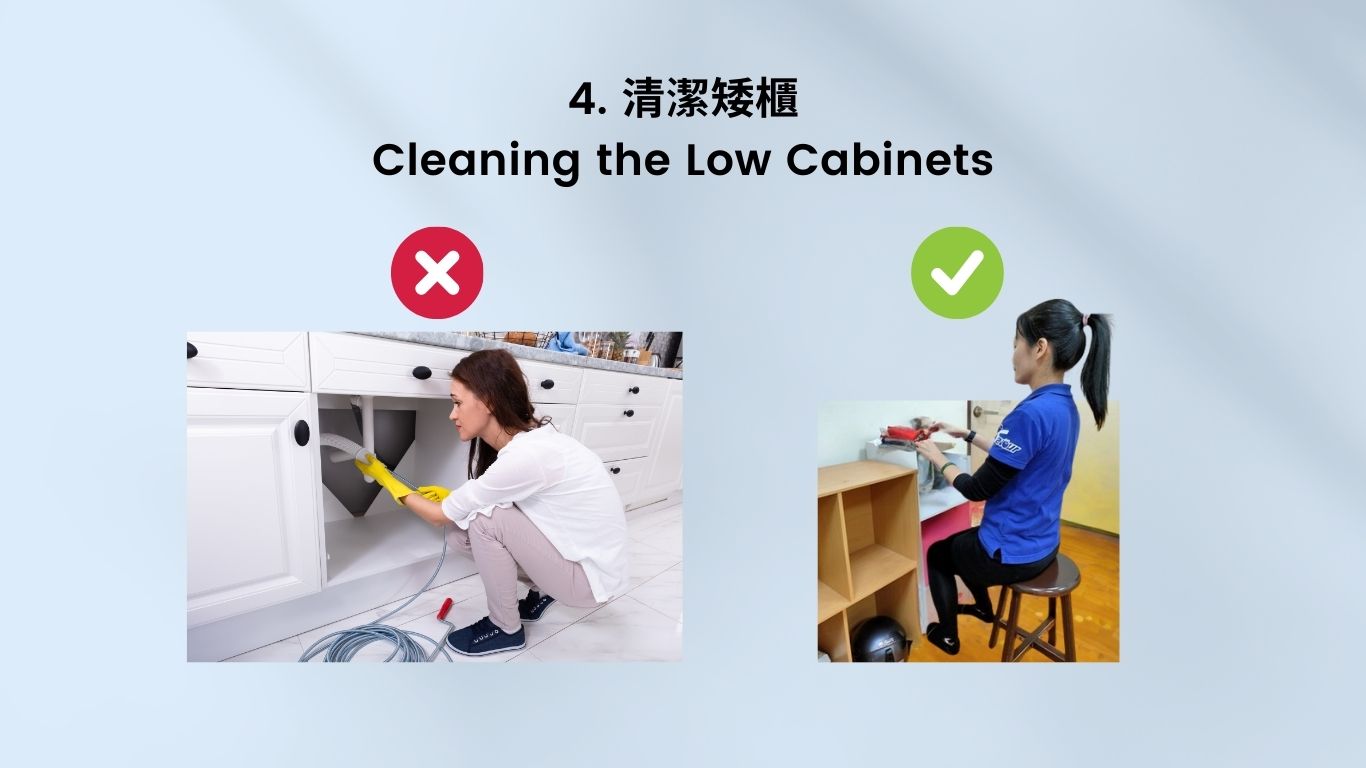
Further reading:



